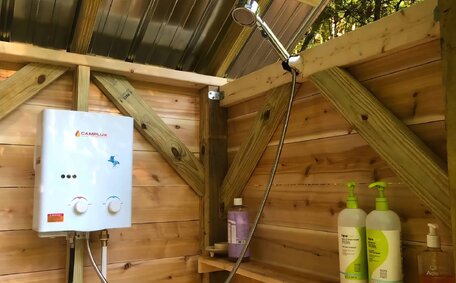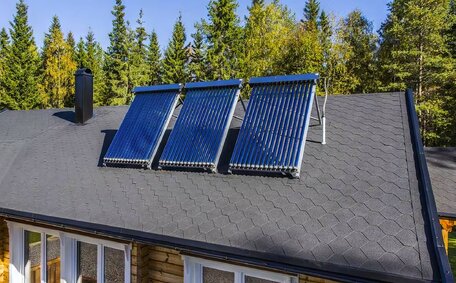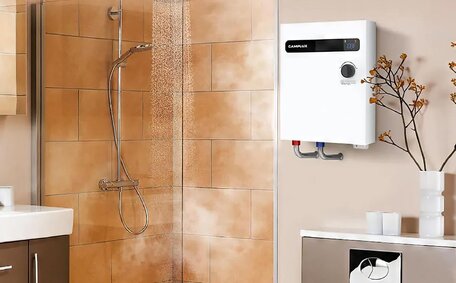Understanding Fire Sprinkler Systems
Fire protection systems like fire sprinklers are a crucial component of safety infrastructure in commercial and residential buildings. As experienced plumbers, we understand the critical role they play in detecting fires early and suppressing flames to minimise damage.
Since the late 1800s, sprinkler systems have provided an essential defence, activating when temperatures reach a preset level. When heat from a growing fire triggers the sprinkler heads, they discharge water to put out or contain the fire before substantial damage can occur.
Some essential components of fire sprinkler systems include:
- Pipes connected to a fire sprinkler tank filled with water under pressure
- Sprinkler heads that activate at a set temperature
- A water source, like sprinkler tanks or municipal water supply
- An alarm to alert occupants and emergency services
Our team at Cranebrook Plumbing brings a wealth of skill in installing, inspecting, and maintaining fire sprinkler systems for optimal performance. Read on to discover the best way to service and reline these critical systems throughout their lifespan.
Identifying the Need to Reline Your Fire Sprinkler System
As fire sprinkler systems age, internal corrosion and mineral buildup can reduce water flow and pressure over time. If flow tests display a 20% or more decrease in capacity, relining is recommended.
Another sign your system could benefit from relining is recurring pinhole leaks or visible interior rusting. While spot repairs can appear optimal initially, relining serves as a comprehensive solution to systemic wear.
For preventative maintenance, particularly in systems using hard water, relining should be considered after 15-20 years of operation. Although a future replacement could be required, relining can extend your system’s life by 10-15 years cost-effectively.
Materials such as steel sectional pipes are more susceptible to corrosion compared to newer copper or CPVC systems. Flexible epoxy coatings used in relining create a suitable barrier that restores older pipes effectively.
In summary, if your system shows its age through loss of water pressure, pinhole leaks, or visible rust flakes, relining by a qualified sprinkler contractor like Cranebrook Plumbing can often forestall the major expense of full system replacement.
Indicators That Your Fire Sprinkler System Requires Relining
There are a few key signs indicating your fire sprinkler system may require relining:
- Visibly corroded or rust-flaked pipes
- Recurring pinhole leaks causing small water spurts
- Significant loss of water pressure over time
- Flaking interior rust or mineral deposits in water
- A dated galvanised or black steel piping system over 10-15 years old
These issues tend to compound over time if not addressed, progressively interfering with the sprinkler system’s fire suppression capabilities. Continued corrosion and leak sites in water tanks need prompt attention to avoid more significant issues down the road.
That’s why we recommend relining older systems proactively before functionality becomes critically compromised. Epoxy relining effectively seals leaks, halts corrosion, and restores water flow rates to near-original levels.
If any of the warning signs resonate, get in touch regarding relining to maintain a reliable fire sprinkler system for the future. Preventative maintenance through relining can postpone the necessity of a full system replacement.
Evaluating Relining Versus Full System Replacement
When weighing up whether to relining or fully replace an ageing fire sprinkler system, there are a few key factors to consider:
- Cost – Generally, relining is 30-50% more affordable than full system replacement.
- Disruption – Relining is less invasive with shorter downtime, reduced demolition & rebuild work
- Timeframe – Relining can be completed in days vs weeks for full replacement
- Effectiveness – Both options restore functionality, flow rate & pressure back to original spec
- Guarantee – Epoxy relining typically includes a 10-year guarantee.
Though relining extends service life by an additional 10-15 years, full system replacement will be necessary in the end. Our experienced staff can help you find out the best option for your property and budget.
For perspective, relining a standard commercial system (20m2 with 50 sprinkler heads) might range from $5,000 to $8,000. Replacing the entire system could run from $15,000 up to $25,000 - nearly a 300% price difference!
For a detailed quote that could affect your bill, feel free to get in touch with our team here at Cranebrook Plumbing today.
Process and Timeline
The relining process typically follows this timeline, though exact durations may vary:
- Initial Consultation (1 day) - We assess your system condition and scope the work required.
- Preparation (1-3 days) - Any necessary repairs are made before relining commences.
- Relining (1-5 days) - Our procedure guarantees that we perform a meticulous cleaning of sprinkler tanks before applying the epoxy coating within pipes.
- Curing & Inspection (5-10 days) - Coatings fully cure and strengthen before pressure testing.
- Completion - Your sprinkler system is restored to optimum working order.
From inspection to completion spans approximately 2-3 weeks depending on system size and configuration. We schedule work in consultation to align with your own timeline and minimise property disruption.
Relining’s non-invasive approach significantly reduces downtime, repair needs, and the demolition and reconstruction associated with full system replacements.
Relining Process and Materials
Relining consists of applying a tough epoxy coating to pipe interiors, designed to bond with materials used in fire sprinkler systems.
Process Overview
Our experienced technicians methodically clean the inner pipe surfaces before applying the liquid epoxy coating via a rotating cylinder under controlled air pressure. The coating then cures and hardens to form a smooth protective barrier.
Key steps include:
- Thorough cleaning and preparation of pipe interiors
- Rotational epoxy coating application
- Controlled curing and hardening process
- Final inspection of the relined pipes
Our choice of epoxy coatings, like NuFlow 7000, offers prolonged protection tailored for fire sprinkler system relining. These solvent-free epoxies can extend system lifespan by 50+ years.
The epoxies form durable, seamless barriers that:
- Halt corrosion of pipes
- Prevent mineral buildup
- Seal pinhole leaks
- Restore water pressure and flow rates
Epoxy relining provides comprehensive protection tailored for the demanding standards of fire suppression systems.
Epoxy Relining
Epoxy coatings, particularly NuFlow 7000, offer a superior relining solution for fire sprinkler systems. As a thermoset plastic material, epoxy resins offer superior adhesion, chemical resistance, and long-term stability.
Importantly, NuFlow 7000 is in line with NFPA 13 standards, ensuring its suitability for fire suppression systems. This ensures full compliance with installation best practises and safety regulations.
The epoxy lining acts as a robust moisture barrier, safeguarding against corrosion for over 50 years. It also restores water pressure and flow rates by sealing leaks and preventing mineral scale buildup.
Our recommendation is epoxy relining for older galvanised, black steel, or copper pipes. The seamless epoxy coating integrates with pipes of various dimensions and configurations.
With extensive experience in epoxy formulations and application methods, our technicians deliver reliable, long-lasting sprinkler system remediation using NuFlow 7000.
Other Relining Options
In addition to epoxy, we provide other relining options for unique fire sprinkler system layouts.
For CPVC or plastic piping, we can apply a seamless CIPP (cured-in-place pipe) liner using flexible polyester or vinyl ester resins saturated with fibreglass laminate. This fabric liner material cures rock-hard to seal leaks and reinforce walls.
For galvanised steel systems susceptible to pinholes, Glass Reinforced Epoxy (GRE) lining offers vigorous corrosion resistance and a smooth finish. Its glass fibre reinforcement is designed to prevent the formation of blisters or bubbles.
We also have extensive experience applying liquid acrylic- or cement-based coatings for added budget options. These coatings deliver dependable protection at a reduced cost, even though seams may be visible.
Our staff can advise the most suitable relining technique for your sprinkler system issues. We carry all necessary specialist equipment in-house, keeping relining projects seamless from inspection to completion.
Standards and Code Compliance
It is crucial that any repairs or relining work on fire sprinkler systems meet all required safety standards and plumbing codes.
Australian Standard AS2118 outlines requirements for materials, design, installation, and activation of fire sprinkler systems. Compliance ensures that life safety and property protection objectives are fulfilled.
Failure to follow proper protocols can severely compromise system integrity. Research indicates about 16% of failures in wet pipe sprinkler systems are due to improper installation or non-adherence to codes.
As licenced sprinkler contractors, we strictly observe all applicable codes and regulations when conducting repairs or relining existing systems. This includes compliance with AS2118 and state plumbing laws.
By working with a certified expert like Cranebrook Plumbing, you can have full confidence your system meets the highest safety standards across design, operation and maintenance.
Maintaining Your System
Routine maintenance and testing are essential to extend the life of a fire sprinkler system. Simple preventative care can optimise performance for over 30 years.
We recommend building owners implement a thorough maintenance routine including:
- Annual inspections - Check for leaks, corrosion, obstruction, adequate water supply, and test alarm systems.
- 5 yearly internal pipe inspections (or more regular if issues found) - Assess interior coatings and mineral buildup.
- Monthly water pressure tests ensure the system maintains the necessary flow rates.
- Filter flushing every 1-2 years - Clear out sediment and other accumulated debris.
Documenting all testing provides an ongoing record of system integrity. With periodic upkeep and minor repairs as needed, reliability and longevity of your fire sprinkler system is optimised.
Contact Cranebrook Plumbing for personalised maintenance plans or to arrange inspections.
When to Call a Professional
As your local plumbing experts, the team at Cranebrook Plumbing should be your first call for any issues with your fire sprinkler system. Whether you need repairs, maintenance, or are considering relining, our fully licenced and insured technicians have the experience to restore functionality and compliance.
We recommend reaching out when you notice signs of corrosion, leaks, loss of water pressure, or if your system exceeds 15 years old. Preventative assessments can catch problems early before they escalate into safety hazards or costly emergency repairs down the track.
Upgrading outdated galvanised or black steel piping through relining can add crucial years of life at a fraction of full system replacement. Our personalised quotes compare options to suit your specific needs and budget.
Located in Cranebrook, we service residential and commercial properties across Sydneys wider western suburbs. Contact us on 1300 349 338 or [email protected] to book an obligation-free inspection or discussion about maintaining your fire sprinkler system.






